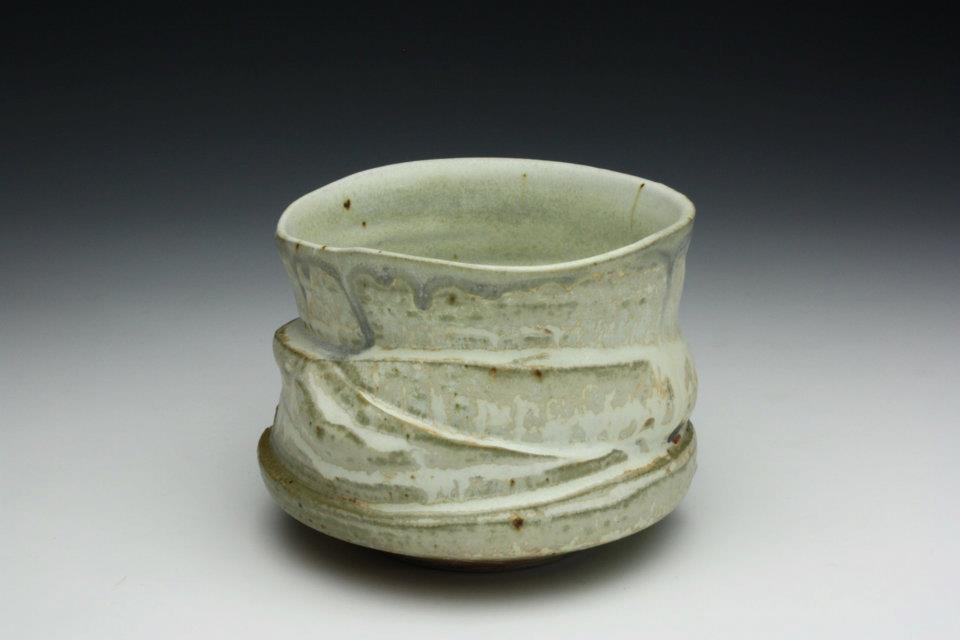
For more formal settings, a wide-mouthed cup called kumidashi chawan is used to serve ocha. Chawan means tea bowl. These are often presented resting on a lacquer saucer and were originally served to guests waiting to enter a ceremonial tearoom.
A pot chawan is used in Ro season (November through April) 
and a shallow chawan is used in Furo season (May through October).

via wikipedia
https://www.wikiwand.com/en/articles/Chawan
A chawan (Chinese: 茶碗; literally "tea bowl") is a bowl used for preparing and drinking tea. There are many types of chawan used in tea ceremonies, and the choice of their use depends upon many considerations. In addition to being used for Chinese tea, it is used for matcha (powdered green tea) in the Japanese tea ceremony.
Jian chawan with "hare's fur" glaze, Song Dynasty (960–1279) Chawan originated in China. The earliest chawan in Japan were imported from China between the 13th through the 16th century. Up till about the 15th century Japan, tea was mainly drunk from a Chinese variety of tea bowls which the Japanese called Tenmoku chawan, the Jian chawan. This type of Chinese chawan was the preferred tea bowl for the Japanese tea ceremony up until the 16th century. The Japanese term tenmoku is derived from the name of the Tianmu Mountain, where Japanese priests visited Chinese temples and acquired these tea bowls to bring back to Japan.
A 13th century Jian chawan from the Song Dynasty sitting atop a 16th century lacquer tea bowl stand from the Ming Dynasty.
An 11th century resident of Fujian wrote about the Jian tea wares:
"Tea is of light colour and looks best in black cups. The cups made at Jianyang are bluish-black in colour, marked like the fur of a hare. Being of rather thick fabric they retain the heat, so that when once warmed through they cool very slowly, and they are additionally valued on this account. None of the cups produced at other places can rival these. Blue and white cups are not used by those who give tea-tasting parties."
By the end of the Kamakura period (1185–1333), as the custom of tea drinking spread throughout Japan and the Tenmoku chawan became desired by all ranks of society, the Japanese began to made their own copies in Seto (in present day Aichi Prefecture). Although the Tenmoku chawan was derived from the original Chinese that came in various colors, shapes, and designs, the Japanese particularly liked the bowls with a tapered shape, so most Seto-made Tenmoku chawan had this shape.[6] With the rise of the wabi tea ceremony in the late Muromachi period (1336–1573), the Ido chawan, a variety of Korean bowls mainly used for rice in Korea, also became highly prized in Japan.
The connection between ceramics and tea-drinking has a rich, evolved culture. The qualities of handmade ceramic vessels have much in common with the virtues revered by the Japanese tea ceremony, or chanoyu, which developed into an art form after the ninth century when tea was introduced to Japan from China. Much like the ceramics it used, the simple act of tea drinking became symbolic in Japan of an appreciation of nature, simplicity and imperfection, and later a high art advocating harmony and balance.Tea bowls are never perfectly round, for they must fit the hands comfortably. A chawan is like a person. It has its own character and given time its own stories to tell, if one would listen. Most of its spirit comes directly from its maker, therefore looking at the creation one can get a sense of what kind of person the creator is, even without having met her or him.